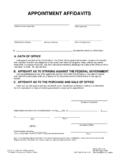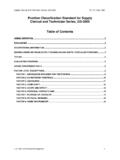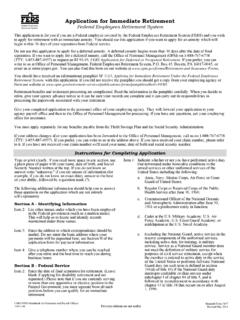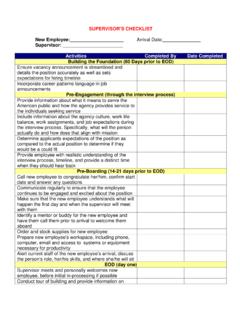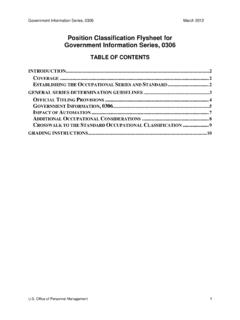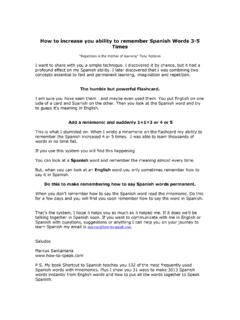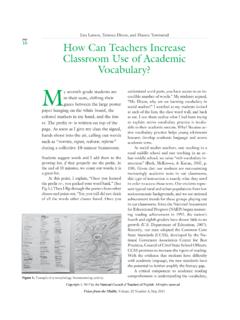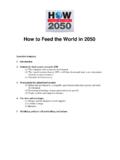Transcription of Within-Grade Increase Denials - OPM.gov
1 Within-Grade Increase Denials While in the process of assisting an employee with improving performance, or sometimes in the process of taking a performance-based action, a supervisor often has to deal with the issue of a Within-Grade Increase denial. Within-Grade increases (often called WIGI) are routinely granted for employees whose performance is acceptable, but supervisors need to be aware of the process required to "deny" a Within-Grade Increase when an employee's performance is not at the acceptable level. In order to be eligible for a Within-Grade Increase , an employee must be performing at an "acceptable level of competence." In most agencies, this eligibility requires a rating of fully successful or equivalent. Depending on the nature of an agency's performance management system, it is not unusual for an employee to be above the unacceptable level but below the level required for a Within-Grade Increase . As soon as you determine that an employee's performance is falling below the acceptable level, even if it is not yet at the unacceptable level, find out when the employee's next Within-Grade Increase is due.
2 Depending upon the step of the employee, there may be a 1-, 2-, or 3-year waiting period until the next Within-Grade Increase could be granted. If it is coming up anytime soon, you need to assess where the employee stands in terms of meeting the standards for an overall rating of acceptable performance. Key Points To Remember: Within-Grade Increases Granting of within grade increases is determined based on meeting the appropriate waiting period and having the most recent rating of record be at an acceptable level of competence or better. To grant a Within-Grade Increase , you must issue a determination that the employee is demonstrating an "acceptable level of competence" as documented in a current rating ( , not more than 1 year old). Once a Within-Grade Increase has been denied, a supervisor has the flexibility to approve a Within-Grade Increase at any time thereafter once the employee is determined to be performing at an acceptable level of competence, but the agency must consider the employee's performance at least every 52 weeks after the denial.
3

